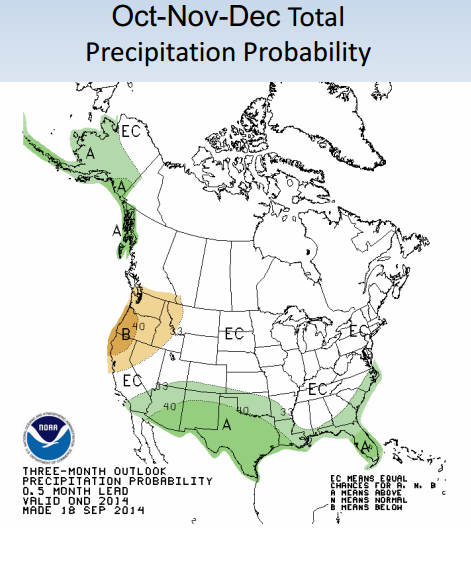Warmer-Than-Average Fall Weather On Tap For US East, West Coasts As El Niño Conditions Heat Up Pacific Ocean

A warmer-than-average fall season is likely on tap for the eastern and western United States, federal climate scientists say, because of an El Niño system forming out in the Pacific Ocean. In such an event, ocean temperatures steadily rise and that, in turn, heats the air that blasts across the U.S.
If the warming persists, it could make 2014 the world’s hottest year ever recorded, Jake Crouch, a climatologist at the National Climatic Data Center of the National Oceanic and Atmospheric Administration (NOAA) told reporters on a call Wednesday. So far, in three of the last eight months -- May, June and August -- average temperatures set record highs.
Sea-surface temperatures in the east-central tropical Pacific reached 0.5 degree Celsius (about 0.9 F) above normal last week, an indication that an El Niño event could finally be ready to form after months of anticipation, according to the monthly climate report. NOAA scientists say El Niño has up to a 65 percent chance of appearing later this fall or early winter, though it will likely be weak when it does.
From October to December, parts of the U.S. Northeast and Southeast and all of the West Coast and Alaska will see above-average temperatures, while slices of Texas, New Mexico and Arizona will see cooler-than-normal temperatures.

For precipitation this fall, the southernmost third of the country will have more rain than it normally does. Northern California and the Pacific Northwest, it turns out, will experience no relief from an enduring and devastating drought. In fact, in most of the Golden State, drought is likely to persist or intensify. Earlier this week, California Gov. Jerry Brown signed landmark groundwater regulations to keep residents from sucking the state dry.
Earlier this year, states east of the Rocky Mountains experienced temperatures so mild that attendance at public pools across the region fell dramatically. The primary cause was a persistent dip in the Northern Hemisphere’s jet stream -- the current of air that hovers in the atmosphere. An El Niño event could help smooth out this dip, lowering the chances of another polar vortex from sweeping through the east come wintertime.

© Copyright IBTimes 2025. All rights reserved.





















